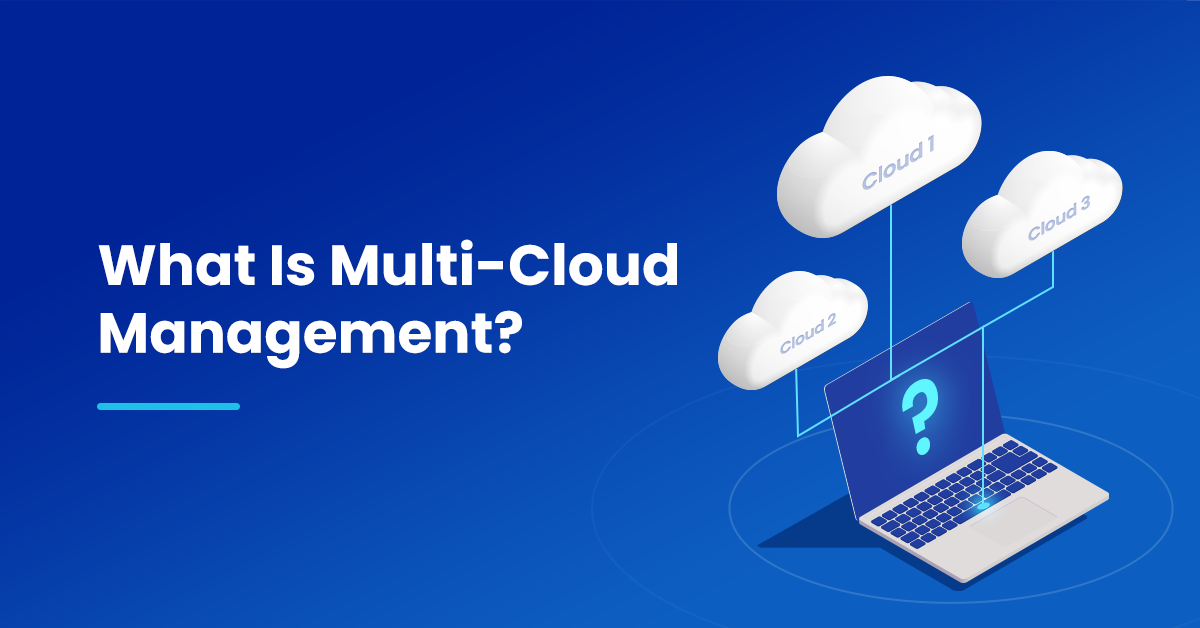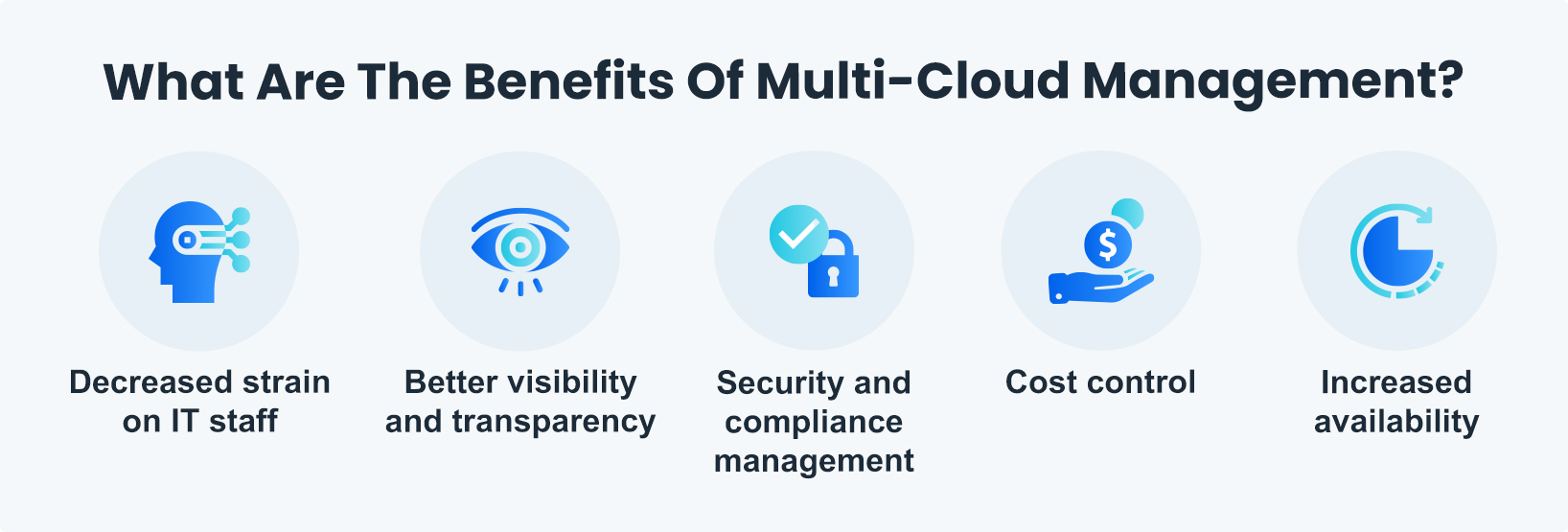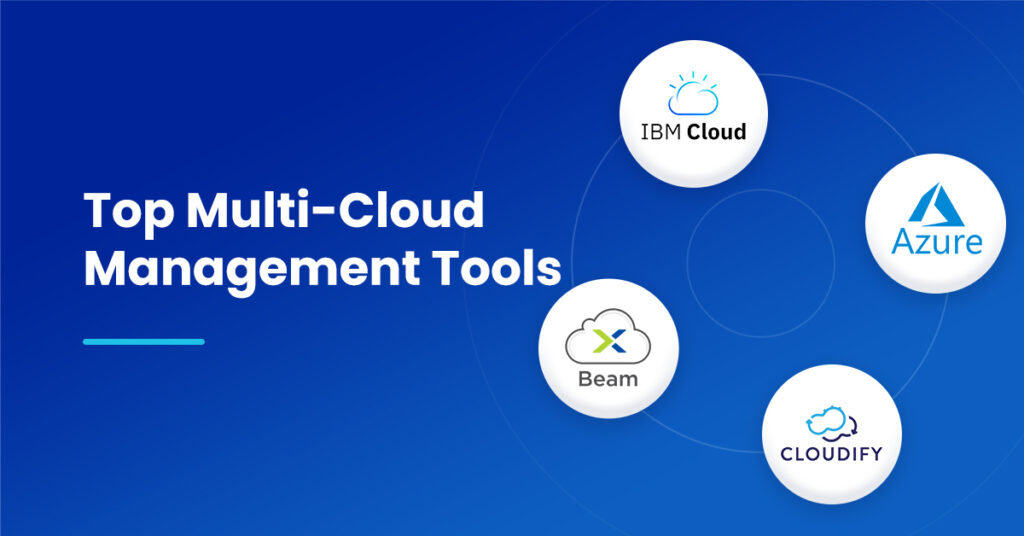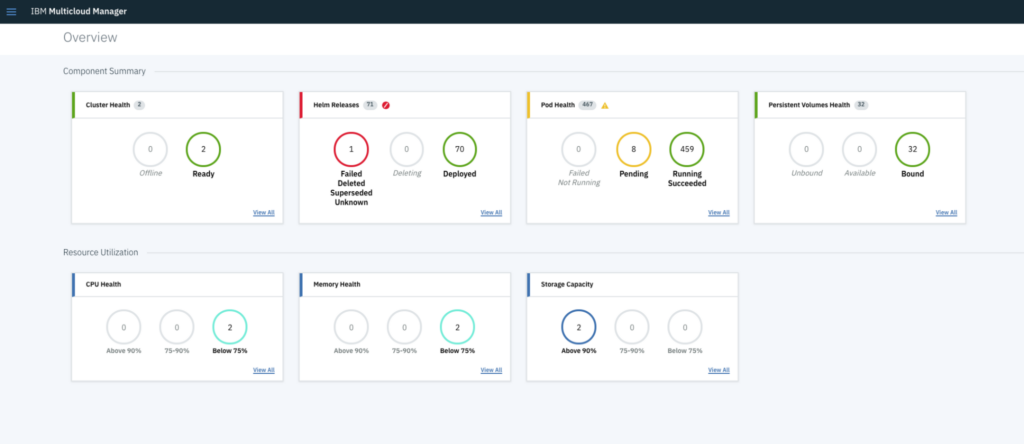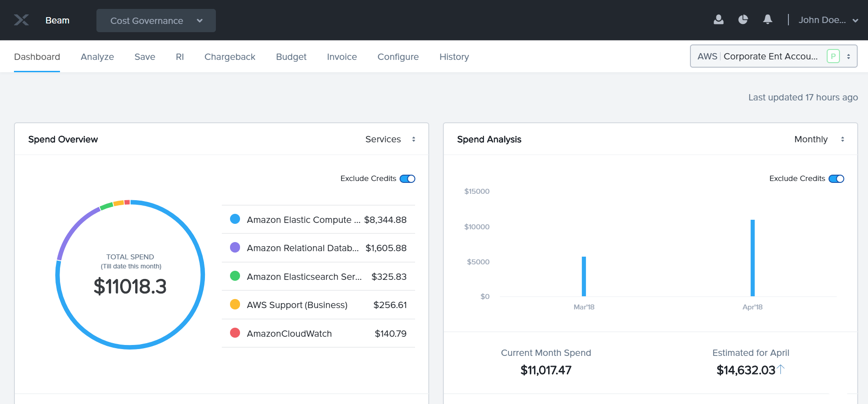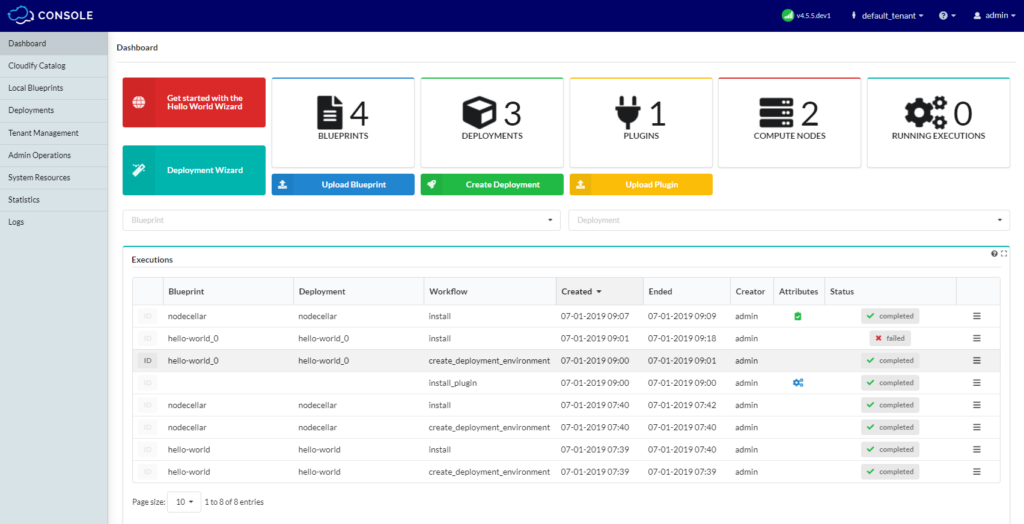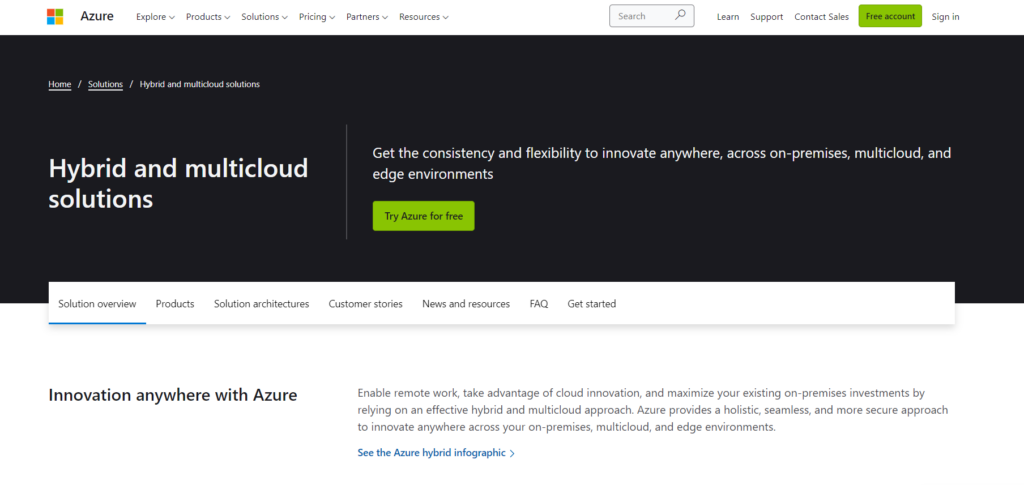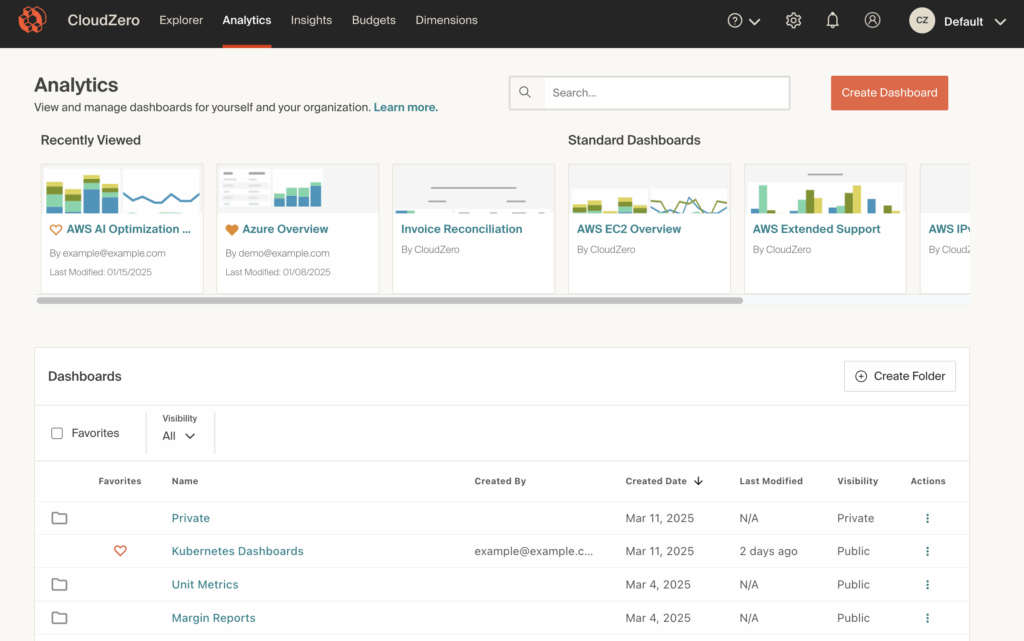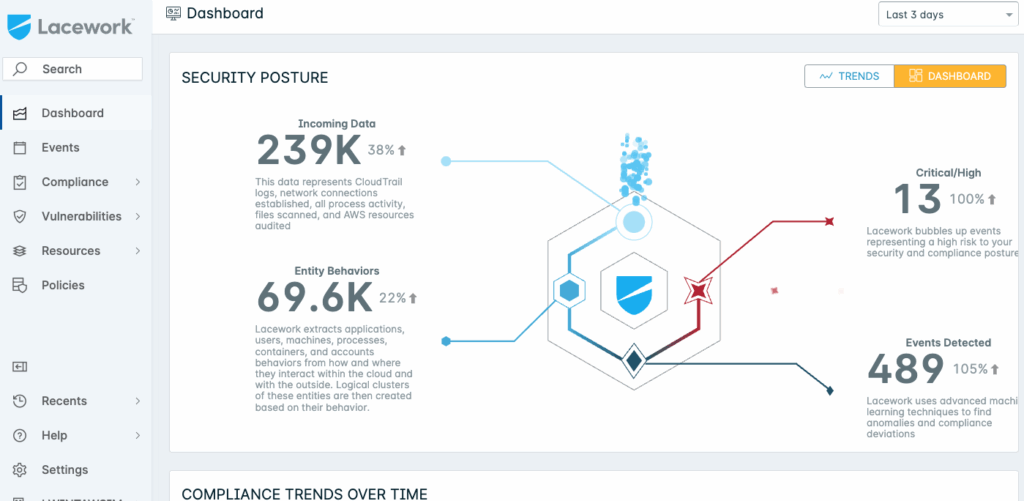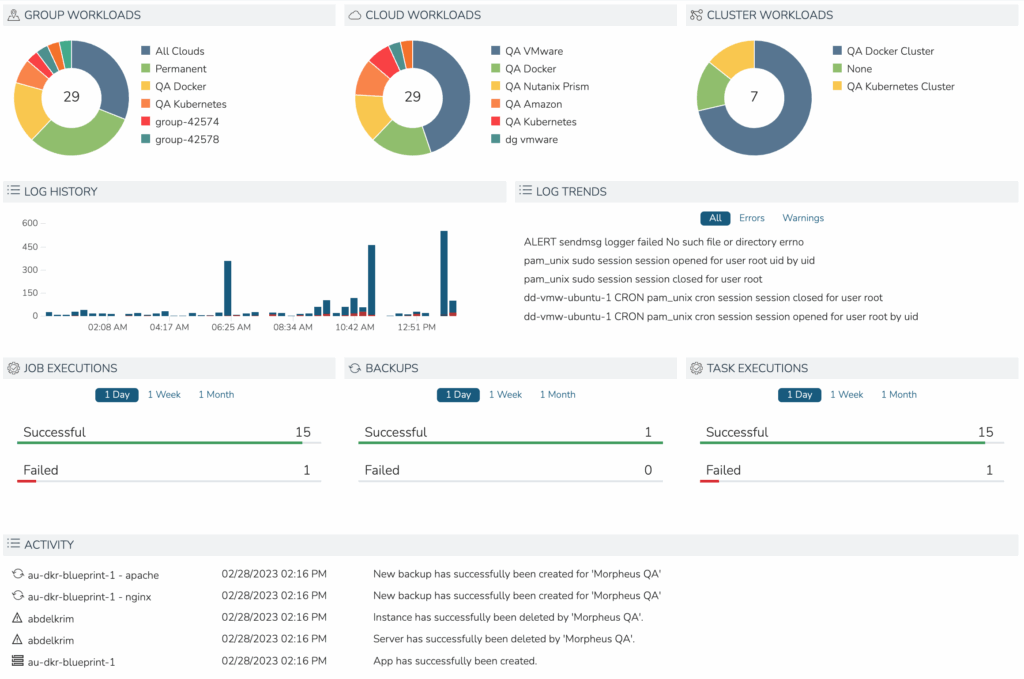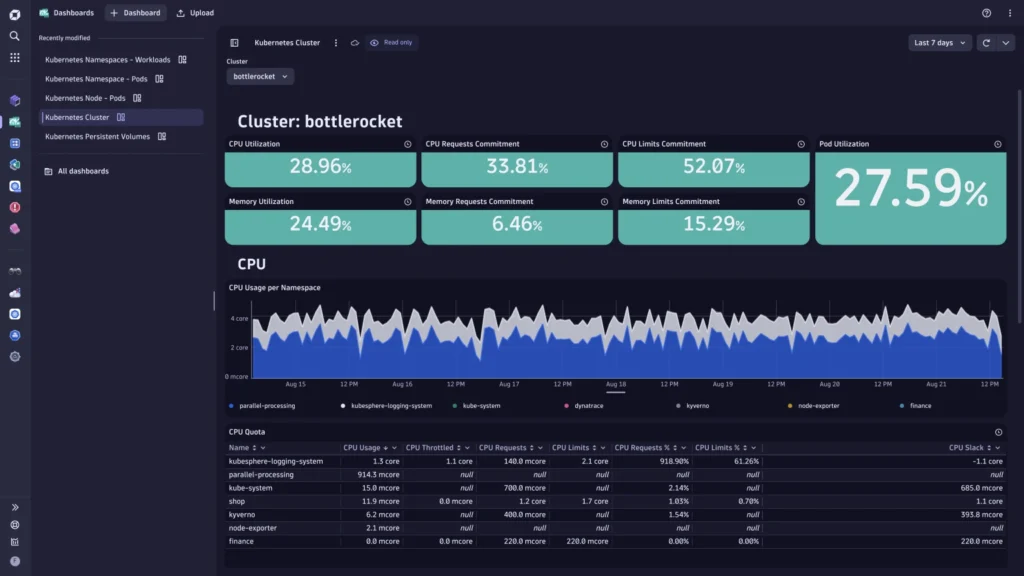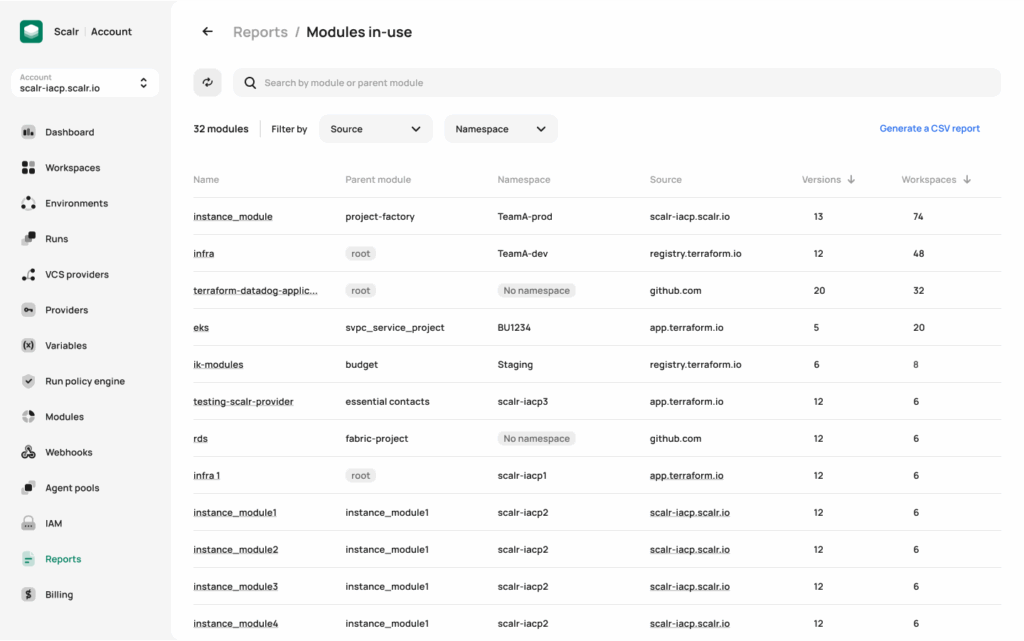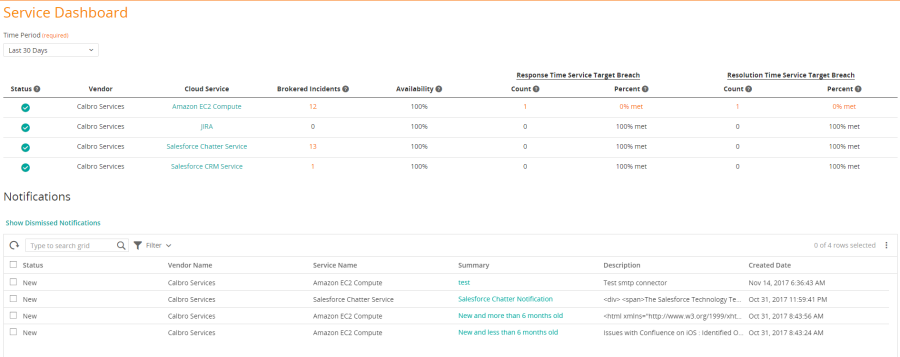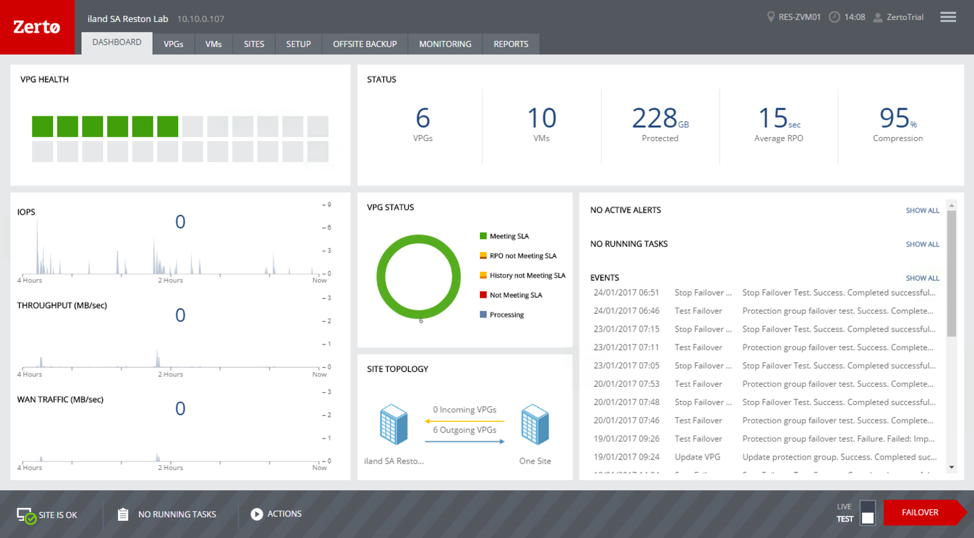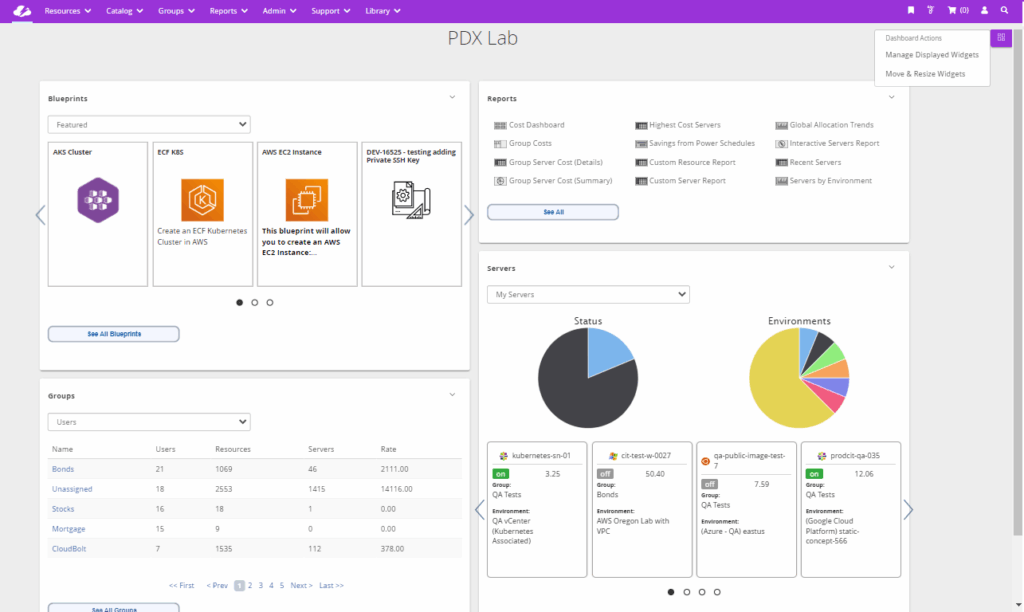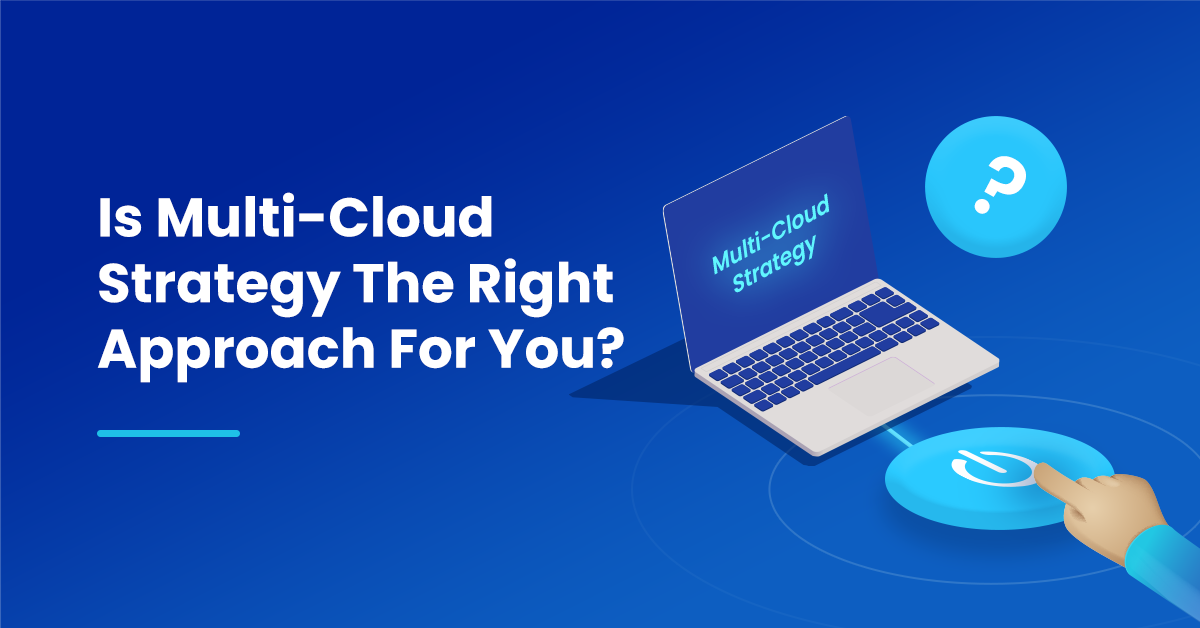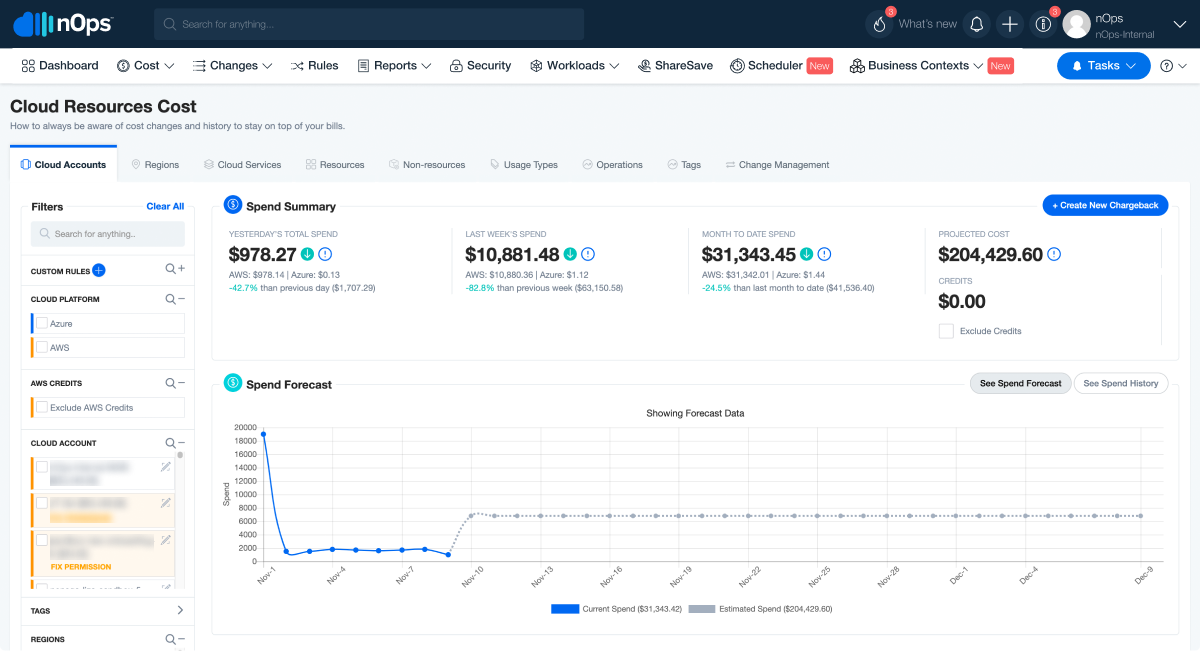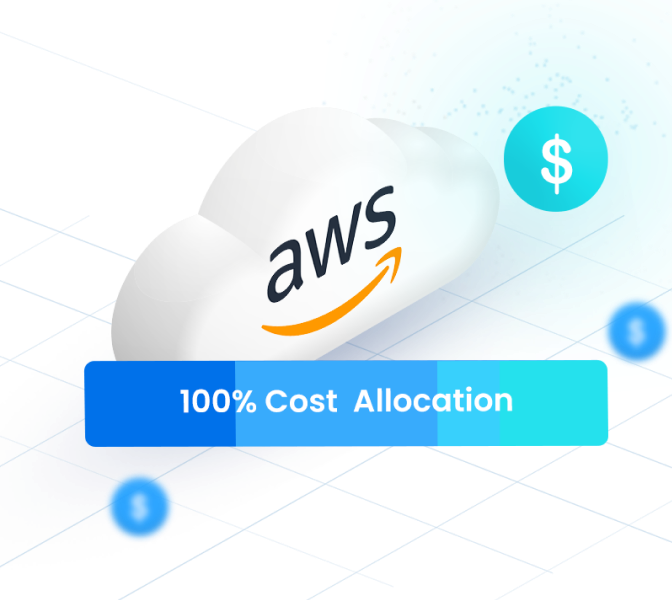14+ Multi-Cloud Management Tools in 2025
Most organizations use more than one public cloud service provider because it helps them reduce dependency on just one vendor. It also makes it possible to optimize cloud usage and costs according to your requirements. Moreover, multi-cloud can provide more flexibility, prevent vendor lock-in issues, and improve overall application performance. With the increasing demand for multi-cloud, there is now a huge demand for multi-cloud management tools as well. But with the global multi-cloud management market valued at $75 billion and counting, there are many options out there.
In this blog, we take a look at what multi-cloud management tools are and the best multi-cloud management tools that you can choose for your organization.
What Is Multi-Cloud Management?
Multi-cloud management involves adding multiple public clouds from different vendors as part of your cloud strategy. It is the process of managing, optimizing, and securing multi-cloud deployment. When an organization uses a multitude of cloud providers, managing them together can be an incredibly complex task. Every cloud vendor has its own features, APIs, SLAs, and challenges. There is a need for disparate clouds to be connected and secure at the same time. Multi-cloud management strategies and tools make it easier to manage multiple cloud providers by centralizing the entire process. With multi-cloud management, you are majorly able to achieve the following goals:
- Self-service: By incorporating self-service capabilities, you are able to eliminate the complex process of IT resource provisioning entirely.
- Workflow automation: You can take actionable steps in real-time to manage cloud computing instances without any manual intervention.
- Cloud analysis and monitoring: You get a single view to monitor and analyze all of your cloud resources. You can also migrate workloads to different cloud environments for better optimization of resources.
Multi-Cloud vs Hybrid Cloud: What's the Difference?
Multicloud means using services from more than one cloud provider—like AWS, Azure, and GCP. Multicloud usually happens because different teams, business units, or acquisitions have different needs—and instead of picking one cloud, companies end up needing to support them all. A multi cloud strategy can also help avoid vendor lock-in or take advantage of each platform’s strengths.
Hybrid cloud combines public cloud infrastructure with on-premises or private cloud environments. It’s often used when organizations need to keep certain workloads on-prem for compliance, latency, or security reasons.
Benefits of Using a Multi Cloud Tool
There are numerous benefits of adopting a multi-cloud tool, including:
- Save engineering time: When you have a tool simplifying and centralizing multiple cloud providers, your IT team can focus on its core responsibilities of managing different applications and workloads across the different clouds.
- Better visibility and transparency: Even in a complex environment, it becomes possible to have better visibility into workloads running across different cloud providers. Your team has complete transparency over the entire multi-cloud environment, which in turn helps improve efficiency.
- Security and compliance management: When you have multiple cloud providers, keeping up with their security policies and regional compliances can be difficult. By following a managed approach, you can enforce security policies across the different platforms better and deal with any security issues proactively instead of reactively.
- Cost control: In most cases, organizations adopt a multi-cloud strategy because they want to take advantage of the discounts offered by the different cloud providers. But managing multiple cloud environments can stack up on costs and increase your overall cloud budget. Multi-cloud management tools help you keep your cloud spending under control through intelligent data analysis.
- Faster troubleshooting and root cause analysis. Multi-cloud tools consolidate performance and usage data across platforms, so teams can troubleshoot issues faster and track down misconfigurations without hopping between dashboards.
Challenges Faced While Implementing a Multi-Cloud Strategy
Even with tools in your arsenal, there are some challenges and limitations to multi-cloud management.
- Increased complexity: Multi-cloud environments are inherently more complex — it can be challenging to coordinate between the different cloud providers for effective cloud management. Without centralization and standardization, visibility and control quickly break down.
- Too many tools: Each cloud may require you to manage different tools for the same purpose, quickly leading to tool fatigue and too many subscriptions.
- Managing cloud billing: Every cloud provider had their own pricing structure, sizing units, billing cycle, and bill formats. As a direct result, managing cloud bills and costs associated with different cloud providers can become extremely difficult without dedicated tools.
- Inconsistent tagging and metadata standards: Tagging strategies that work well in AWS may not carry over cleanly to Azure or GCP, making cost allocation and resource tracking unreliable across clouds.
- Lack of unified accountability: With workloads spread across teams and platforms, it’s hard to know who owns what, who’s spending what, and who’s responsible when things go off track.
How to Choose the Best Multi-Cloud Management Tool for Your Company
When evaluating a multi-cloud management platform, start with compatibility—make sure it supports all the cloud providers you use and integrates cleanly with your existing systems, services, and third-party tools. The platform should scale with your organization, handling increasing workloads and accounts without breaking down or requiring a full reimplementation. Look for automation features that can reduce manual overhead, like resource cleanup, scaling, and tagging enforcement, so your teams spend less time on cloud hygiene and more time on innovation.
A strong multi-cloud tool also needs to support flexible cost management, with built-in budgeting, forecasting, anomaly detection, and cost allocation across providers. Avoid solutions that tie you into one vendor’s ecosystem—multi-cloud should be about flexibility, not a new form of lock-in. Usability matters too; your teams should be able to navigate the platform without needing weeks of training. Finally, prioritize strong governance and reliable support—clear access controls, compliance features, and timely help when something breaks will save you time, risk, and unnecessary spend.
14 Top Multi-Cloud Management Tools in 2025
Now that we’ve discussed the key benefits, challenges, and features to look for, let’s dive into the list of the top multi-cloud management tools:
1. IBM Multi-Cloud Manager
With IBM Cloud Manager, organizations can effectively manage environments across different Kubernetes clouds and customers. The platform integrates all the environments into one centralized view for better control. It provides configuration tools, application backups, disaster recovery, and the option to automate processes across all workloads. Multi-Cloud Manager’s biggest strength lies in helping improve security and governance with configuration tools.
IBM Multi-Cloud Manager is best suited for large enterprises because it’s built around complex, containerized environments, requires significant setup and integration effort — it is most valuable when managing high-scale Kubernetes clusters across regulated or distributed infrastructures.
2. Nutanix Cloud Manager
Nutanix Cloud Manager is designed for enterprises running a mix of on-prem and public cloud infrastructure. Where many tools focus solely on cloud-native environments, NCM bridges traditional datacenters and multicloud with a unified management layer. It emphasizes automation, access controls, and cost governance—all tightly integrated to reduce operational overhead.
NCM is particularly valuable for organizations that aren’t fully cloud-native but still need to standardize how they manage resources across environments. In addition to visibility, NCM helps control spend, enforce policy, and streamline operations at scale.
3. Cloudify
Cloudify is an open-source multi-cloud management software for managing and automating multi-cloud applications. Every environment has high-level codes that can be reused like templates to run applications. Its other features include deployment management, Python support, and role-based access control.
However, as an open-source tool, it has a steeper learning curve, a less polished interface, and limited native support for cost optimization. Cloudify is best suited for teams focused on orchestration and infrastructure-as-code, rather than strictly cloud cost management.
4. Microsoft Azure
Microsoft Azure provides secure management of on-premises, public cloud, multi-cloud and edge environments. It allows you to manage and govern your cloud resources through a single control panel. You can build and deploy applications everywhere in your multi-cloud. Azure is also an enterprise-grade platform that is more suitable for organizations that are looking to modernize their IT infrastructure and go hybrid.
While it offers some multi-cloud capabilities, it’s primarily designed for organizations already invested in the Microsoft ecosystem—and that’s where it delivers the most value.
5. CloudZero AnyCost
CloudZero AnyCost focuses on unifying cloud spend across providers like AWS, Azure, GCP, Snowflake, and Datadog into a single, structured view. It’s especially useful in multicloud environments where cost data is fragmented and tagging isn’t consistent across teams.
The main value of CloudZero is to help companies allocate costs by product, team, or feature and align spend with business outcomes. However, it’s a visibility-only tool—so if you’re looking for automated actions like rightsizing or commitment management, you’ll need to pair it with another platform.
6. Terraform
Terraform is an open-source infrastructure as code (IaC) tool used to provision and manage resources across AWS, Azure, GCP, and other cloud providers. It’s not a cloud cost optimization tool in itself, but it plays a key role in multi-cloud management by standardizing infrastructure deployment across environments. Teams use Terraform to maintain consistent configurations, reduce drift, and automate provisioning workflows.
It’s best suited for organizations that want cloud-agnostic infrastructure management and have the DevOps maturity to manage code-driven deployments.
7. RedHat Ansible
Red Hat Ansible is an open-source automation platform used to configure, deploy, and manage infrastructure across hybrid and multi-cloud environments. It’s particularly strong in automating repetitive tasks, enforcing configuration consistency, and orchestrating deployments at scale. Like Terraform, it doesn’t provide built-in cost visibility or optimization features, but it’s widely used to standardize infrastructure operations across various cloud providers and on-prem systems.
8. Lacework
Lacework is a cloud security platform that focuses on threat detection, compliance, and posture management across AWS, Azure, GCP, and Kubernetes environments. It doesn’t offer cost optimization or infrastructure automation, but it plays a key role in securing multi-cloud environments through behavior-based anomaly detection and continuous compliance monitoring. Lacework is often used by security teams that need visibility across workloads, containers, and accounts without manually stitching together tools for each provider.
It’s best suited for organizations prioritizing cloud-native security and governance at scale—especially in regulated or highly distributed environments. If you’re looking to control risk in a multi-cloud setup, Lacework can be a strong complement to cost-focused or automation-first platforms.
9. Morpheus
Morpheus is a hybrid and multi-cloud management platform that focuses on provisioning, governance, and automation across on-prem, private, and public cloud environments. It supports all of the main cloud providers with a central interface to manage infrastructure, enforce policies, and deliver self-service IT.
Morpheus offers deep support for legacy systems alongside cloud-native tools, making it well-suited for organizations in the middle of modernization. It also includes features for cost visibility and quota enforcement, though it’s more operations-focused than FinOps-driven. Morpheus is best for IT teams looking to unify management across complex environments with a multi cloud governance platform — not just for visibility, but for provisioning and control.
10. Dynatrace
Dynatrace is a full-stack observability platform designed to monitor applications, infrastructure, and user experience across complex environments. It combines telemetry data with AI-powered analysis to help teams detect performance issues and pinpoint root causes automatically.
While it isn’t purpose-built specifically for cost optimization, it provides visibility into how architecture and application behavior affect resource usage — which has a major impact on cost, not to mention performance and reliability.
11. Scalr
Scalr is a remote operations backend for Terraform that helps organizations manage infrastructure as code across multiple teams and cloud providers. It’s designed to bring governance, policy enforcement, and role-based access control to decentralized IaC workflows—critical for managing infrastructure consistently in a multi-cloud setup. While it doesn’t offer direct cost optimization, Scalr plays a supporting role in cost control by reducing configuration drift and ensuring teams follow provisioning policies. It’s best suited for organizations with broad Terraform adoption that need to scale multi-cloud infrastructure without losing control over spend, access, or standards.
12. BMC Multi-Cloud Management
BMC Multi-Cloud Management is built for enterprises that need to extend IT service management and governance practices across both cloud and on-prem environments. It helps organizations coordinate service requests, incidents, and change processes across different platforms through centralized ITSM workflows. Rather than focusing on infrastructure automation or direct cost optimization, it’s primarily aimed at maintaining policy enforcement, compliance, and operational consistency. BMC is often a fit for organizations already using its ITSM tools and looking to apply those same standards to a growing multi-cloud footprint.
13. Zerto
Zerto is a disaster recovery and data protection platform focused on ensuring application availability across cloud and on-prem environments. It enables replication, failover, and recovery for virtual machines and workloads between cloud providers or from on-prem to cloud.
Zerto plays a key role in multi-cloud strategies by simplifying continuity planning and minimizing downtime risk. It’s often used by organizations that prioritize resilience and want a consistent recovery experience across hybrid and multi-cloud architectures.
14. CloudBolt
CloudBolt is a hybrid and multi-cloud management platform focused on provisioning, governance, and automation across cloud and on-prem environments. It provides a centralized way to deploy infrastructure, enforce policies, and manage cost visibility across multiple providers.
CloudBolt supports self-service IT while allowing central teams to maintain control through role-based access and compliance checks. While it offers cost tracking and budgeting features, it’s better suited for organizations looking to standardize provisioning and governance workflows than for deep cost optimization.
Is Multi-Cloud Strategy The Right Approach For You?
Despite the advantages, multicloud environments can be highly challenging for internal teams to manage. Managing multiple cloud providers can drive up costs in addition to complexity — most organizations only end up adopting multi-cloud if it’s absolutely necessary.
Given AWS’s dominant cloud market share, many teams find that a well-optimized single-cloud strategy—especially with the right cloud optimization tools — can deliver greater value and simplicity than a multicloud setup. Before committing to multi-cloud, it’s worth asking: do you truly need multiple clouds, or can you achieve your goals more efficiently within one? If you’re running on AWS, investing in a purpose-built AWS Cloud Management Tool can help generate more immediate value than using generalized multicloud tools.
Find Out How nOps Tackles Multi-Cloud Costs
nOps is a clear choice to manage your cloud operations for AWS or multicloud with its extensive set of integrations, visibility features, and automated cost optimization features. While many tools offer general monitoring or reporting, nOps goes further by helping teams take real action—automating rightsizing, optimizing EC2 commitments in real time, and continuously identifying savings opportunities across accounts.
The nOps automated FinOps platform can help you reduce your cloud bill by over 50%, all while freeing your engineering team’s time to focus on building an innovating. Some of its key multicloud features include:
- Automated cost allocation, tagging, reporting, dashboards, budgeting, forecasting, cost anomaly detection
- Integrations with AWS, Azure, GCP, Kubernetes, & 3rd party SaaS like Databricks, Datadog, Snowflake, etc.
- Automated rightsizing, storage optimization, and other bulk optimizations
- Continuous monitoring and optimization through the power of AI
- Adjusting AWS EC2 commitments in real-time for optimal commitment utilization with a 100% utilization guarantee
- Support for all the major compliances including HIPAA and SOC2
Your team focuses on innovation, while nOps runs optimization on auto-pilot to help you track, analyze and optimize accordingly.
To find out how much you can save, sign up for nOps today or book a personalized demo with one of our multicloud experts.
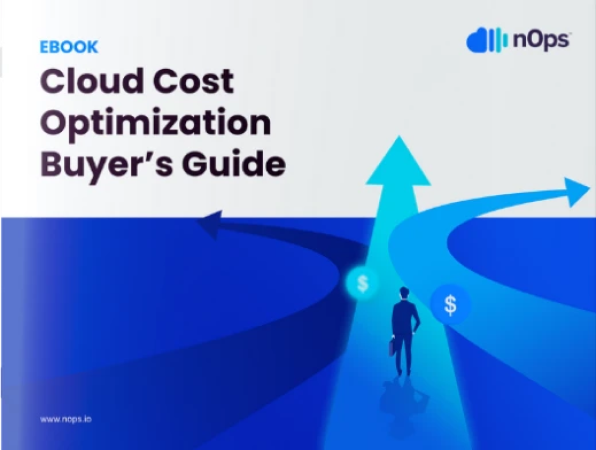
Frequently Asked Questions (FAQ)
What are cloud management tools?
Cloud management tools enable organizations to monitor, control, and optimize cloud resources across public, private, or hybrid environments. They provide functionalities like provisioning, automation, cost tracking, and security compliance, ensuring efficient operations and governance of cloud infrastructures. Cloud management tools include third-party tools like nOps, or tools native to cloud services like AWS, GCP or Azure. Multi cloud management tools cover multiple service providers.
How to manage multicloud?
Managing multicloud involves using centralized platforms to oversee resources across various cloud providers. Best practices include implementing unified monitoring, automating deployments, enforcing consistent security policies, and optimizing costs through analytics. Tools like AWS Systems Manager and third-party multi cloud management platforms facilitate streamlined multicloud operations. nOps helps with multicloud management by offering dozens of integrations allowing you to analyze your unified AWS, Azure, GCP, GenAI and SaaS spend all in one place.
Is AWS a multicloud?
No, in fact AWS is a single cloud provider. However, it offers services and tools that support multicloud strategies, allowing integration and management across different cloud platforms. This enables organizations to operate in a multicloud environment while leveraging AWS’s capabilities. An example of multicloud infrastructure would be an organization that uses both AWS and GCP.
How many companies use multicloud?
As of 2025, approximately 89% of large companies have adopted a multicloud approach, utilizing services from multiple cloud providers to enhance flexibility, avoid vendor lock-in, and optimize performance. This trend towards a multi cloud management platform reflects the growing need for diversified and resilient cloud strategies in modern enterprises. That being said, many smaller organizations and startups are not yet multicloud – in that case, it is most common to rely on AWS as a single provider rather than manage multiple cloud services.



